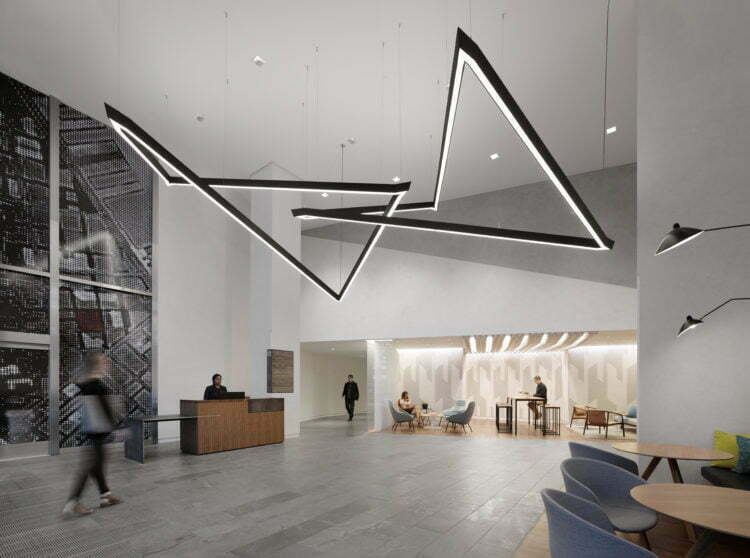When planning a reception area design it’s important to be clear at the start of your project about several key factors of reception desk specification. Get it right at the outset, and you will save yourself and your company a great deal of hassle and stress. Get it wrong, and not only can it be a painful and lengthy process, but it could end up costing you money too. This first stage is crucial to the success of all that follows so make sure you are asking all the right questions. Take a step back and try to separate the form from the function. Clear your mind of all thoughts over how it should look, and focus 100% on the role your reception desk must fulfill within the environment in which it is to be set.
The checklist asks a series of questions that will give your furniture designer all that is needed to take things quickly on the next stage and to immediately highlight any potential problem areas that will need to be discussed before the design process begins. You can download our checklist at the end of this post!

Step 1 – The reception desk. What is it? What must it do?
- How many users need to be accommodated?
- Will it need to allow for specific equipment such as PCs, printers, fax machines, security equipment?
- Computer monitors: Are you happy for them to be visible from the visitor side or should they be concealed behind a raised counter? If you want them to be hidden from the visitor, you’ll need to know their physical size, not just their screen size. You may decide that in view of the possible expenditure involved in designing a reception desk to cater for existing equipment, it may be prudent to consider budgeting for a new monitor if it then opens up the possibility of a less expensive standard product reception counter.
- Will it need to make provision for Wheelchair users?
- Bear in mind a recess on the visitor side can sometimes reduce the knee space for the staff manning the desk.
- Will visitors need to sign in and therefore need a high-level counter to lean on? Maybe a more informal, open feel is required with a single low-level surface.
- Does it need storage? If so, what type? i.e. pedestals, shelving, cupboards etc…
- Are there any architectural features to accommodate, such as walls, columns, split level floors or ceilings?
- Who will be using it from the visitor side? Will it be treated with respect by all who come into contact with it, or must it be able to withstand some abuse? Maybe a tough, metallic finish plinth would help to prolong the counter’s working life.
- Does it need to be ‘secure’? If it’s for use in a school or public sector building does it need to be sealed off from the visitors? Maybe you should consider security glazing.
- How will the receptionist access the desk?
- Will it require a gate and flap?
Remember your computer monitors:
As so many reception desks today must allow for a computer monitor, it is important to consider the effects this can have on the design as early as possible. Concealing a large monitor simply may not be practical, and we will work closely with you to find the best solution. This can often be an area of compromise in reception desk design.
Counter heights and eye lines
An able-bodied visitor with a typical minimum height of 1540mm approaching a raised counter tall enough to hide a large monitor on a desktop height of 740mm would clearly struggle to make eye contact with a seated receptionist. As a rough guide, a counter height of over 1200mm will create a potential ‘blind spot’ resulting in the visitor remaining almost unseen and making the counter simply too high to be practical for signing in.
Of course, many reception desks only try to hide cabling and display the receptionist’s monitor prominently. In this case, it can come down to a matter of flexibility, having the option to move a monitor around, allowing a receptionist to stand or sit facing their monitor, or even to turn the screen toward or away from a visitor. When these are important considerations it is necessary to look into adjustable monitor arms.
Step 2 – What should it look and feel like?
Now that you’ve successfully established the function, it’s time to consider the aesthetics. What kind of impression should it make? Should it be warm and inviting, or bold and austere? What kind of reaction do you want to create in the visitor? Is it purely functional or a real ‘statement piece’ aimed at dominating the whole area?
Aspects to think about:
- What shape should it be? Curved, straight, conical or a combination of shapes?
- What features to add? Should it have upstands, raised counter caps, a recessed plinth, integral feature, lighting, inlay banding, a graphics area, maybe even a lightbox with a backlit logo? There are so many options!
- How should it be finished? Consider the materials available. -A real wood veneer creates a sumptuous, quality finish for any reception desk. Maybe durability is more important – today’s wood grain laminates are extremely convincing and of course very hard-wearing. What about more architectural finishes such as stone, glass or steel. -There are also a wide array of man-made materials to consider, such as acrylic, foil, reconstituted stone or Corian®.
A picture tells a thousand words
If you’ve already seen something that you like, show us! It is vastly more reliable and effective to have a conversation about the design of something that is currently just an idea when we’re all looking at the same image for reference. Go online and see what’s around. There is a huge wealth of excellent design available – we’ve picked out some of our favourite pieces here.
Check out one of our latest reception desks for Wired Sussex

Step 3 – How much and by when?
A good understanding of budget and timescale is fundamental to ensuring any project gets off to a smooth start. It’s often difficult to establish clearly what has been set aside for the reception desk, particularly when it’s just one element of a reception area project, but being clear on this factor at the outset is crucial. Keep it simple and be honest. If you’re not entirely sure, don’t be embarrassed to ask. How accurate you are at this stage underpins what is achievable.
To give you some idea:
- Curved and conical desks are generally more expensive than straight desks, due to the amount of forming work that goes into their construction. For this reason, they also take longer to produce. Straight desks generally cost less, but may not offer the visual appeal you are trying to create
- Real wood veneer is more expensive than laminate, takes longer to apply, requires specialist skills and must go through a rigorous polishing process, hence veneer costs more than laminate. Of course, it also looks more expensive too.
- Where budget and time allow, some projects will naturally call for a one-off bespoke solution. However, if there is less to spend and the desk is needed quickly, you may want to explore the option of a standard product. There are many ranges available on the market today that will answer a host of design and budget requirements.
Real wood veneer vs laminates: The differences
Real wood veneer is a natural product. A very thin sheet of unpolished wood is bonded to a large area of the board (usually MDF) to ensure there is a good amount of continuous grain to work with. It is then cut into the various sections that will eventually make up the finished reception desk.
Planning how the board is cut into the component parts is often a complicated task, as the furniture maker must ensure that the grain will perfectly match at all joins. Although most desks tend to be specified with the wood grain running vertically, a horizontal grain is also an option, and it’s important to consider how either approach will look when the front and side faces meet the worktop. Maybe a different veneer for the worktop would be an option, or a different finish altogether.
If mistakes are made at the cutting stage the grain will not match up and the whole sheet may have to be discarded. “Measure twice, cut once” was never so important as when working with real wood veneer!
Once the board is cut and the desk is constructed, then the polishing begins. This process transforms the dull, unfinished veneer into beautiful gloss wood grain with the sumptuous, deep lustre that we are more familiar with and that cannot be created in any other way.
Question: Why specify real wood veneer?
Answer: For a uniquely rich, warm, natural finish
Woodgrain laminate sheets start life as a printed paper that is laminated and then rolled with a wood grain texture to give the appearance of real wood. This creates a highly robust material that is flexible and available in wide a range of plain, wood grain and other specialist finishes. Improvements in the quality of this type of product in recent years have resulted in some very good likenesses to real wood veneer.
The boards used to construct a laminated reception desk are cut to shape from plain unfinished MDF and assembled together with glued biscuit joints by the cabinet maker. Once the construction is complete, the maker then applies the laminate sheets to each panel, ensuring that the wood grain pattern matches across all joins. Any exposed ends of boards are finished with matching PVC edging strips.
As the finish on a laminate sheet requires no specialist polishing, the desk can progress through the factory to the finished product much quicker and is hence generally less expensive
Question: Why specify laminate?
Answer: For a clean, crisp, well-defined finish that’s both attractive and highly durable.
Standard or Bespoke?
If you opt for a standard product route, ask us early on whether the chosen standard reception desk is capable of being adapted to suit your needs. Does manufacturing happen here in the UK, or does it all happen abroad? If they do manufacture here, why not consider arranging a visit to see for yourself? A good furniture manufacturer has nothing to hide and should be proud to show you furniture being made by hand.
What do I need to supply?
Once you’ve considered and answered the questions above, you also need to provide:
A drawing/sketch of the floor area with any architectural elements clearly marked and measured, with power supplies indicated.
A rough footprint of the desk you want.
If possible, some quick photos of the area.
Step 4 – The design presentation
Once you have engaged with us and provided all the information gathered in section 1, it’s time for us to put in the hours. We will work with you to interpret your ideas and generate a comprehensive, contemporary design for you.
Step 5 – Placing the order, delivery, and installation
Once the design, price and lead time are agreed it’s time to place your order.
At this point, we will generate the finished construction drawings for you to approve (unless it’s a standard product where drawings are not necessary). Take your time and study them carefully. If you are even slightly unsure about any element at this point, ask questions. These are the drawings that will be handed to the cabinet makers who will create your reception desk, so if it’s on the drawing, it will be on the desk.




